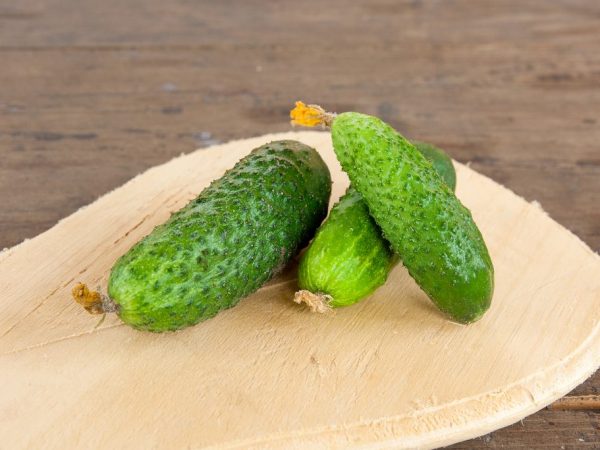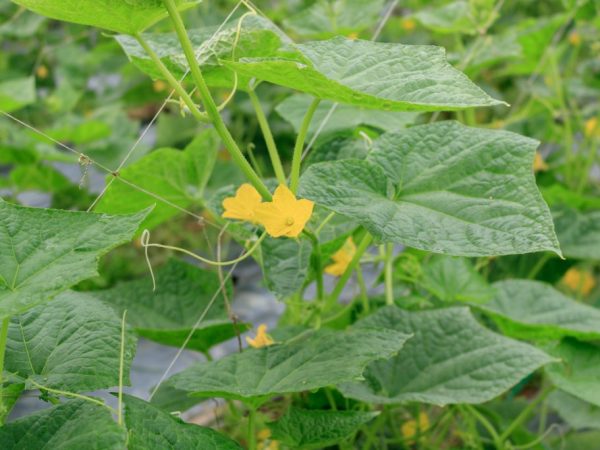Characteristics of cucumbers of the Derevensky Razol variety
Cucumbers are of great benefit to the human body, since they contain substances valuable for health. Various salads, snacks are prepared from them, and they are also added to soups and other dishes. The village pickle variety of cucumbers is an excellent representative of this type of vegetables. It can be grown both outdoors and in a greenhouse.

Characteristics of cucumbers of the Derevensky Razol variety
Characteristics of the variety
Cucumber variety Village Pickle is an early ripening self-pollinated hybrid. The period from germination to harvesting of the first crop is about 40-43 days. It is characterized by an extended period of fruiting.
This variety is planted both by sowing and seedling methods. Recommended for growing in all regions.
Description of the bush
The plant is medium-branched. The flowering type is female. The node contains 3-4 female flowers. Leaves on bushes of medium size, dark green. Possesses good resistance to cladosporium disease, as well as moderate resistance to cucumber mosaic virus and powdery mildew.
Description of the fetus
The fruit is cylindrical. It is rather short - 8-10 cm. The cucumber weighs about 90-100 g. The surface is small tuberous. Crunchy, no voids inside. Possesses excellent taste characteristics. Suitable for pickling and pickling.
Care
Plant care includes the following procedures:
- watering;
- loosening of the soil;
- weeding;
- feeding.
Watering
Watering pickles is recommended after sunset. Use warm water. It is desirable that its temperature be around 25-28 degrees. On average, cucumbers are watered every 3-5 days. The soil should be moistened within a radius of 15 cm, to a depth of about 20 cm. It is necessary that the soil near the root collar remains dry. If the weather is cold or cloudy, watering should be limited, because with excess moisture, the roots begin to rot, and fungus may also appear on the leaves. The stream of water must be weak, otherwise there is a risk of injury to the roots. If the cucumbers are grown in a greenhouse or greenhouse, they must be ventilated after watering. It is better to leave open containers with water near the beds so that constant humidity remains around.
Loosening the soil
For growing the variety f1, medium loamy airtight soil is suitable. It is good if the predecessors were crops such as potatoes, onions, cabbage or peppers.
Loosening of the soil must be done carefully so as not to damage the roots of the plants. The best option is between the rows of cucumbers. Loosening of the soil should be carried out before flowering begins.
Weeding

Plants need sunlight
Weeding and thinning the bushes is very important, as cucumbers do not tolerate darkening. The last thinning should occur when the third leaf appears on the plant. The distance between the bushes should be about 7-10 cm, and between the rows - about 60-70 cm.
Feeding
Fertilizers should be applied in moderate doses, alternating mineral and organic. It is forbidden to use chlorine-containing potassium salts, as cucumbers do not react well to chlorine. The main fertilizers are slurry and poultry manure. Sprays plants with mineral fertilizers in the evening in calm weather. It is important to remember that in cloudy cold weather, there is no point in feeding, since the growth of cucumbers slows down, and the root system is not able to properly absorb nutrients. You should wait until the air temperature reaches at least 10 degrees, and only then apply fertilizers.
Pests and diseases
The most common pests in cucumbers are:
- spider mite;
- melon aphid;
- greenhouse whitefly.
Spider mite
A barely noticeable cobweb appears on the leaves. The affected leaves need to be collected and squeezed or buried deep in the ground. Plants should be treated with insecticides several times during the growing season.
Melon aphid
Leaves, as well as other parts of the plant affected by aphids, curl and dry out. Since aphids with larvae overwinter in plant debris, it is necessary to destroy weeds in a timely manner. You can also put ladybirds in the greenhouse.
Greenhouse whitefly
Sucks juice from leaves. As a result, they turn black and dry. To prevent infestation, you need to regularly remove weeds, as well as cover the vents and doors with gauze. Affected plants should be sprayed with water and the underside of the leaves should be rinsed.
Unfortunately, not only the above-mentioned pests can be dangerous for cucumbers. They can also be affected by various types of fungi, viruses and bacteria. To combat each specific disease, there are methods of struggle.
Conclusion
Growing cucumbers is a rather laborious process. The plant should be taken care of at all stages of its development.
Caring for the bushes must be given enough time, and you must also remember to follow the rules and recommendations. But if done right, the reward will be a great harvest.


